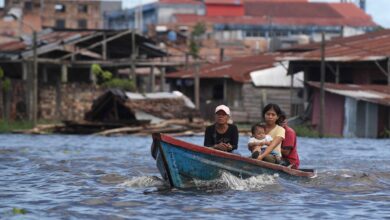How to Handle the Return to Face-to-Face Classes with the Children?
The schools have reopened their doors after more than a year of virtuality. This can mean another big change for the kids, or even something completely new.

The virtuality of the COVID-19 pandemic not only affected adults, it also had consequences for children in their academic process. Photo: Unsplash
LatinAmerican Post | Vanesa López Romero
Listen to this article
Leer en español: ¿Cómo manejar el regreso a la presencialidad con los niños?
The virtuality caused by the COVID-19 pandemic not only affected adults, it also had consequences for children in their academic process. It meant a radical change that they had to get used to from one moment to the next, a change in which they had to learn to be self-sufficient with the tools they had at hand while outside a pandemic created chaos. Many even had to take (through a screen) class for the first time in their life without knowing what it is like to be in a classroom, surrounded by classmates and with a teacher accompanying them .
Now, after more than a year after the pandemic began and with the vaccination process advancing around the world, most schools have decided to open their doors to receive them again. This can excite many children, but it can also cause confusion for others. Furthermore, we cannot deny that sudden changes in educational models can directly affect them.
You may also be interested in: Infographic: Does the mandatory use of masks in schools really work?
It is safe?
Questions have arisen about whether returning to classrooms is the best for children and whether they will be completely safe, taking into account that the vaccine cannot be applied to children under 12 years of age . The WHO and other international health organizations agree that returning to face-to-face classes is necessary, as long as biosafety measures are applied both at home and in educational facilities. They also insist that children over 12 years of age who present some comorbidity be vaccinated urgently to avoid suffering serious symptoms that could put their lives at risk.
If this is fulfilled, it can be avoided that the learning process of the minors around is not interrupted again by a spike of the virus.
Necessary?
According to Amanda Eslava, a psychologist at Atlantic International University, returning to face-to-face is very important. "Educational institutions must find a way to return to schools by promoting self-care in both teachers and students and parents," she says. Likewise, it ensures that personal contact directly affects the development of children, because by sharing with other children and having a follow-up by teachers, cognitive, physical and social skills are formed that prepare them to confront a social and family life. "Learning should not only be from a cognitive area, but it can also touch emotional areas, giving importance to mental health."
"In any case, virtuality does not affect all children in the same way. It must be taken into account that the family and socio-cultural environment, learning difficulties or cognitive development disorders can affect to a greater or lesser extent ", says Eslava. On the other hand, the expert comments that children who continue in virtuality tend to become socially withdrawn and create bonds of affective and emotional codependency with their parents, hence the importance of resuming face-to-face classes.
What do the teachers think?
It is more than clear that teachers prefer presneciality, as this allows an approach with students that virtuality does not offer. For Laura Prieto, a teacher at the Los Portales Gymnasium in Bogotá, although virtuaility has advantages, the face-toface classes allows an emotional connection with the students in that it is possible to directly observe how the child is in their environment. On the other hand, on a personal level, she assures that "it is very important to have a work area and another rest area. In my case I could not separate those spaces, so it became exhausting because I felt that my workday was never ending and there was always something to do. "
Likewise, Prieto has observed that her students have been very happy with the return to the classroom. "They have tried to resume, to a certain extent, their pre-pandemic life. Seeing their friends, telling what happens to them, what excites them. They have expressed their excitement to return, although the issue of biosecurity bothers them a lot, although the mask it is already a object to which they have adapted ", assures the teacher.
Regarding the parents, she assures that they have been very calm. "As fearful as it may cause them, it gains the weight of social and emotional well-being that personal contact can offer their children." It also ensures that schools and teachers are working with biosecurity measures and feel calm, so they hope that parents also feel that tranquility.
How to return to the schools in an organic way?
For Eslava, the key is to open spaces for conversation with minors, where they are allowed to express their concerns and resolve doubts. Also, children can be told about the spaces they can access and the benefits. "Parents should be calm when talking to their children and should inform themselves before what the school requires to resume classes, so the little ones can comply with all the protocols," she says.




